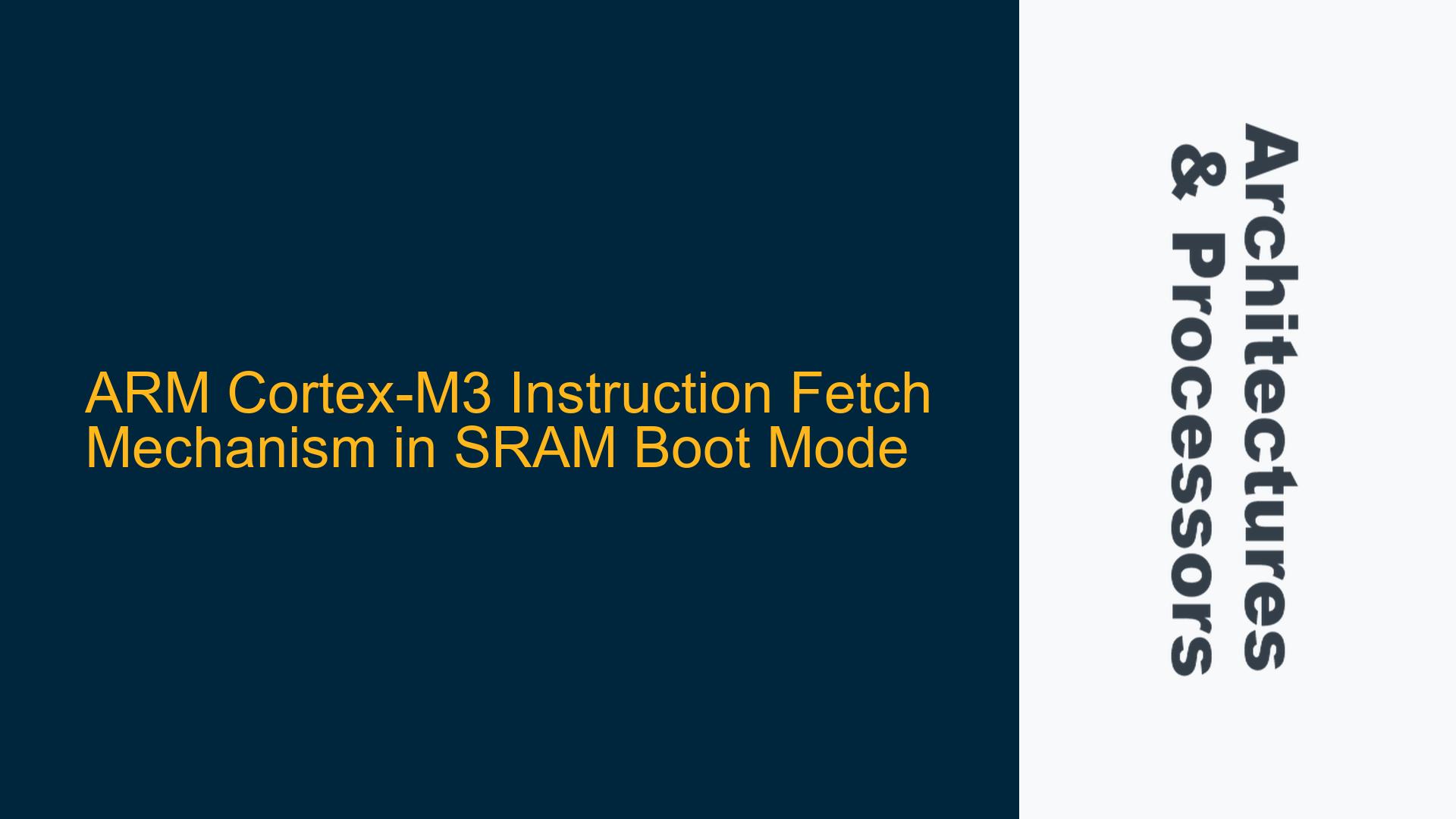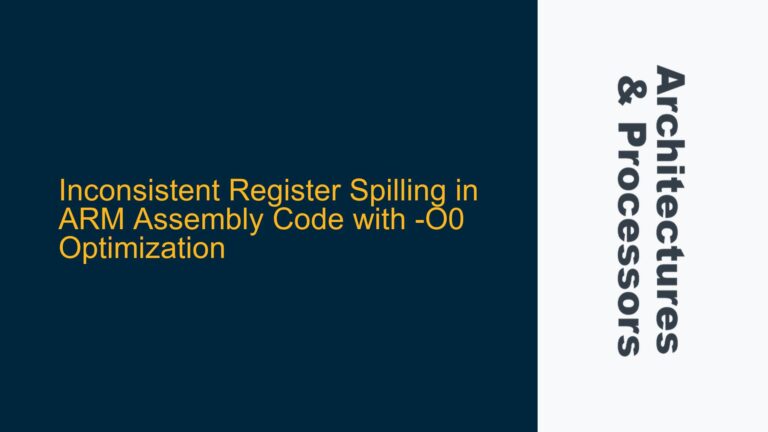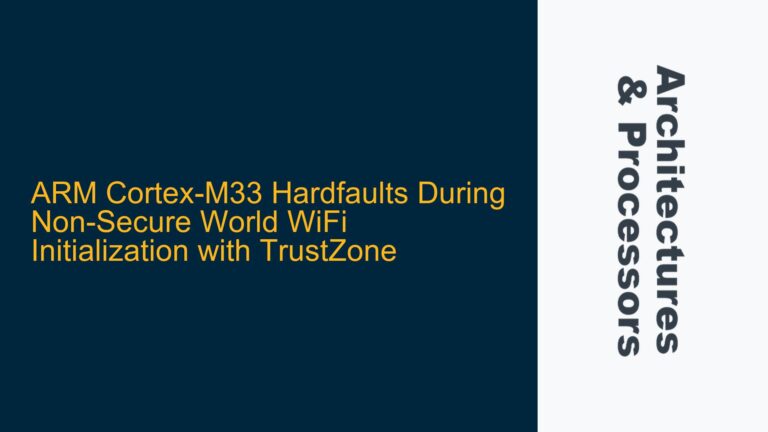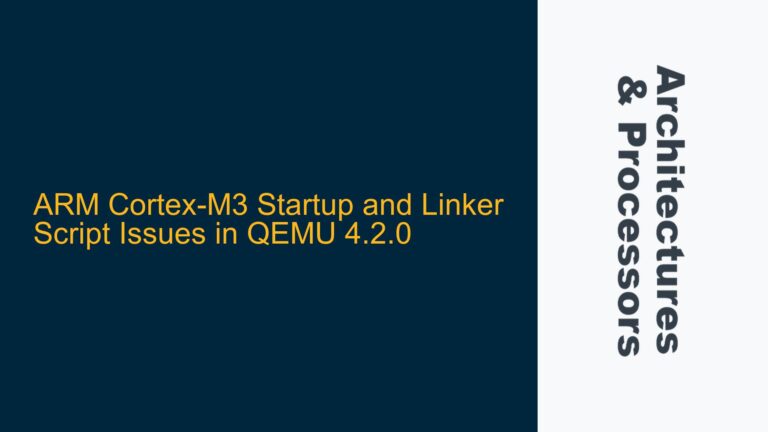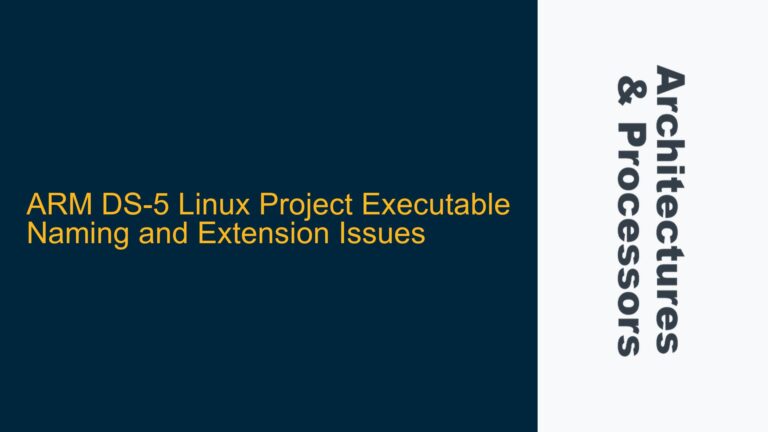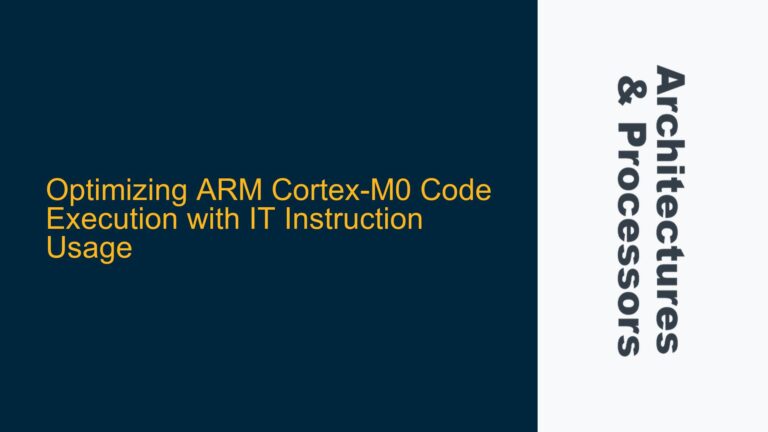ARM Cortex-M3 Instruction Fetch Mechanism in SRAM Boot Mode
The ARM Cortex-M3 processor is a widely used 32-bit RISC processor designed for embedded applications. One of its key features is the Harvard architecture, which separates the instruction and data buses (I-Bus and D-Bus) to allow simultaneous instruction and data access. However, a common point of confusion arises when the Cortex-M3 is configured to boot from embedded SRAM, as the I-Bus is typically connected to Flash memory. This raises the question: how does the Cortex-M3 fetch instructions from SRAM during boot when the I-Bus is not directly connected to it? Understanding this mechanism is critical for developers working with STM32F103xx microcontrollers or similar Cortex-M3-based systems, as it impacts boot configuration, performance, and system design.
The Cortex-M3 uses multiple buses to access different memory regions. The I-Bus is primarily used for fetching instructions from Flash memory, while the D-Bus is used for data access. However, the system bus (S-Bus) also plays a role in instruction fetching, particularly when executing code from SRAM. During SRAM boot mode, the processor must fetch instructions from SRAM, which is not directly connected to the I-Bus. This requires the use of alternative buses, such as the D-Bus or S-Bus, to access instructions stored in SRAM. This mechanism introduces additional considerations, such as latency and prefetching behavior, which can affect system performance.
To fully understand the instruction fetch mechanism in SRAM boot mode, it is essential to examine the roles of the I-Bus, D-Bus, and S-Bus, as well as the implications of fetching instructions from SRAM. This includes analyzing the prefetching behavior of the I-Bus, the latency introduced by using the S-Bus for instruction fetching, and the impact of these factors on system performance. By exploring these aspects, developers can gain a deeper understanding of the Cortex-M3 architecture and optimize their systems for SRAM boot mode.
Prefetching Behavior and Bus Latency in SRAM Boot Mode
The Cortex-M3’s I-Bus is optimized for fetching instructions from Flash memory, which typically involves prefetching to improve performance. Prefetching allows the processor to fetch instructions ahead of time, reducing the latency associated with accessing Flash memory. However, when executing code from SRAM, prefetching is not necessary, as SRAM has much lower access latency compared to Flash. This raises the question of how the processor handles instruction fetching in SRAM boot mode, where the I-Bus is not directly connected to SRAM.
In SRAM boot mode, the Cortex-M3 fetches instructions using the D-Bus or S-Bus instead of the I-Bus. The D-Bus is typically used for data access, but it can also be used for instruction fetching when executing code from SRAM. This is because the D-Bus is connected to SRAM, allowing the processor to access instructions stored in SRAM. However, using the D-Bus for instruction fetching introduces additional latency compared to the I-Bus, as the D-Bus is not optimized for instruction fetching.
The S-Bus also supports instruction fetching, but it introduces additional latency due to the registration of instruction and vector fetch requests. When fetching instructions from the S-Bus, the processor incurs an additional cycle of latency, as the fetch requests are registered before being processed. This results in a two-cycle latency for instruction fetching via the S-Bus, compared to the single-cycle latency of the I-Bus. This increased latency can impact system performance, particularly in time-critical applications.
The prefetching behavior of the I-Bus further complicates the instruction fetch mechanism in SRAM boot mode. Since the I-Bus is optimized for Flash memory, it performs prefetching to reduce access latency. However, when executing code from SRAM, prefetching is not necessary, as SRAM has much lower access latency. This means that the prefetching behavior of the I-Bus is not utilized in SRAM boot mode, potentially leading to inefficiencies in the instruction fetch process.
Implementing Efficient Instruction Fetching in SRAM Boot Mode
To optimize instruction fetching in SRAM boot mode, developers must consider the trade-offs between using the D-Bus and S-Bus for instruction fetching. The D-Bus offers lower latency compared to the S-Bus, as it does not require the registration of fetch requests. However, the D-Bus is not optimized for instruction fetching, which can lead to inefficiencies in the instruction fetch process. On the other hand, the S-Bus supports instruction fetching but introduces additional latency due to the registration of fetch requests.
One approach to optimizing instruction fetching in SRAM boot mode is to minimize the use of the S-Bus for instruction fetching. This can be achieved by configuring the system to prioritize the D-Bus for instruction fetching when executing code from SRAM. By doing so, developers can reduce the latency associated with instruction fetching and improve system performance. Additionally, developers can optimize the placement of critical code sections in SRAM to minimize the impact of latency on system performance.
Another approach is to leverage the Cortex-M3’s memory protection unit (MPU) to configure the memory map and optimize instruction fetching. The MPU allows developers to define memory regions and assign access permissions, which can be used to prioritize instruction fetching from SRAM. By configuring the MPU to prioritize the D-Bus for instruction fetching, developers can reduce the latency associated with instruction fetching and improve system performance.
In addition to optimizing the instruction fetch mechanism, developers should also consider the impact of SRAM boot mode on system initialization and startup. During SRAM boot mode, the processor must initialize the SRAM and load the necessary code before executing it. This process can introduce additional latency, particularly if the SRAM is not pre-initialized. To minimize this latency, developers can pre-initialize the SRAM and load the necessary code before entering SRAM boot mode. This can be achieved by using a bootloader or other initialization routine to prepare the SRAM for execution.
Finally, developers should consider the impact of SRAM boot mode on system debugging and testing. Since SRAM boot mode involves fetching instructions from SRAM, it can be more challenging to debug and test compared to Flash boot mode. To address this, developers can use debugging tools and techniques specifically designed for SRAM boot mode, such as on-chip debugging and trace analysis. These tools can help developers identify and resolve issues related to instruction fetching and system performance in SRAM boot mode.
By understanding the instruction fetch mechanism in SRAM boot mode and implementing the appropriate optimizations, developers can ensure efficient and reliable system operation. This includes minimizing latency, optimizing memory access, and leveraging the Cortex-M3’s features to improve system performance. With these considerations in mind, developers can confidently design and implement systems that leverage SRAM boot mode for improved flexibility and performance.
